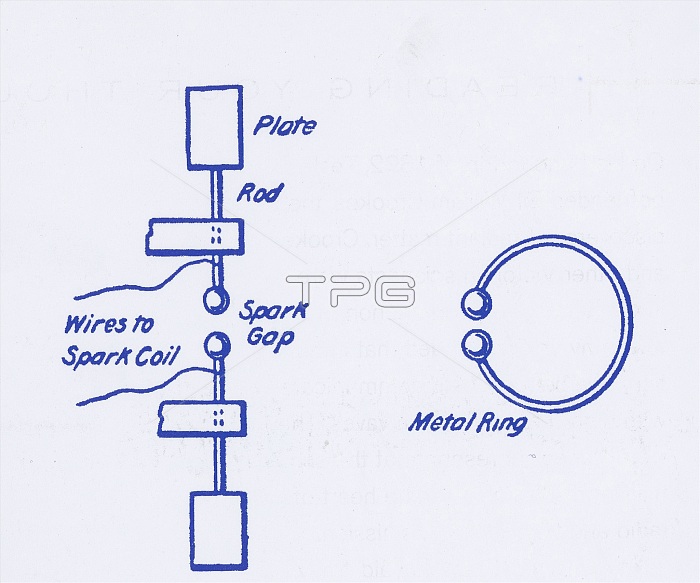
Hertz's 1887 apparatus for generating and detecting radio waves: a spark transmitter (left) consisting of a dipole antenna with a spark gap powered by high voltage pulses from a Ruhmkorff coil, and a receiver (right) consisting of a loop antenna and spark gap. Heinrich Hertz, a German physicist, applied Maxwell's theories to the production and reception of radio waves. The unit of frequency of a radio wave - one cycle per second - is named the hertz, in honor of Heinrich Hertz. He proved the existence of radio waves in the late 1880s. He used two rods to serve as a receiver and a spark gap as the receiving antennae. Where the waves were picked up, a spark would jump. Hertz showed in his experiments that these signals possessed all of the properties of electromagnetic waves. With this oscillator, Hertz solved two problems. First, timing Maxwell's waves. He had demonstrated, in the concrete, what Maxwell had only theorized - that the velocity of radio waves was equal to the velocity of light! (This proved that radio waves were a form of light!) Second, Hertz found out how to make the electric and magnetic fields detach themselves from wires and go free as Maxwell's waves.
| px | px | dpi | = | cm | x | cm | = | MB |
Details
Creative#:
TOP22156371
Source:
達志影像
Authorization Type:
RM
Release Information:
須由TPG 完整授權
Model Release:
N/A
Property Release:
No
Right to Privacy:
No
Same folder images:

 Loading
Loading